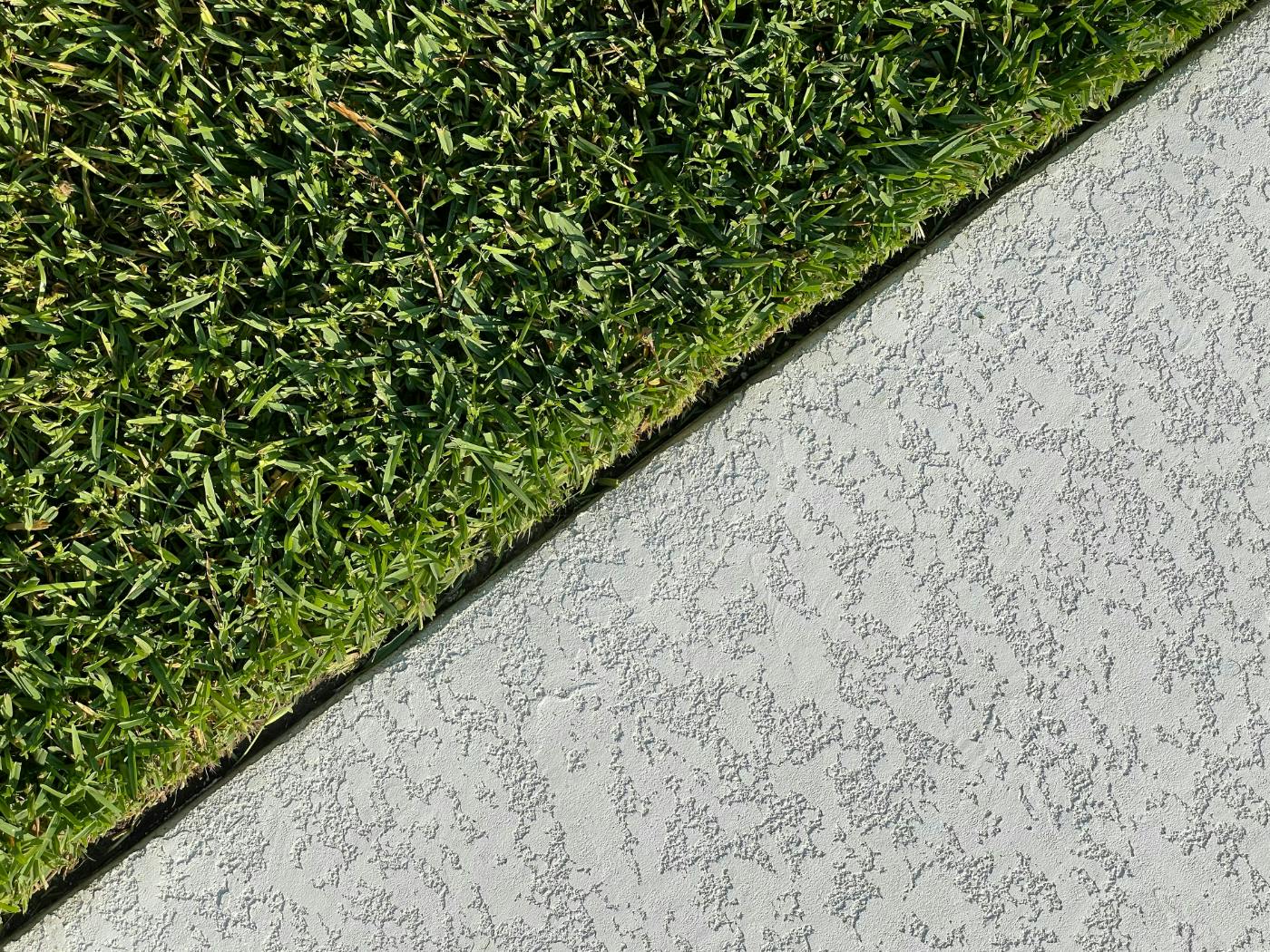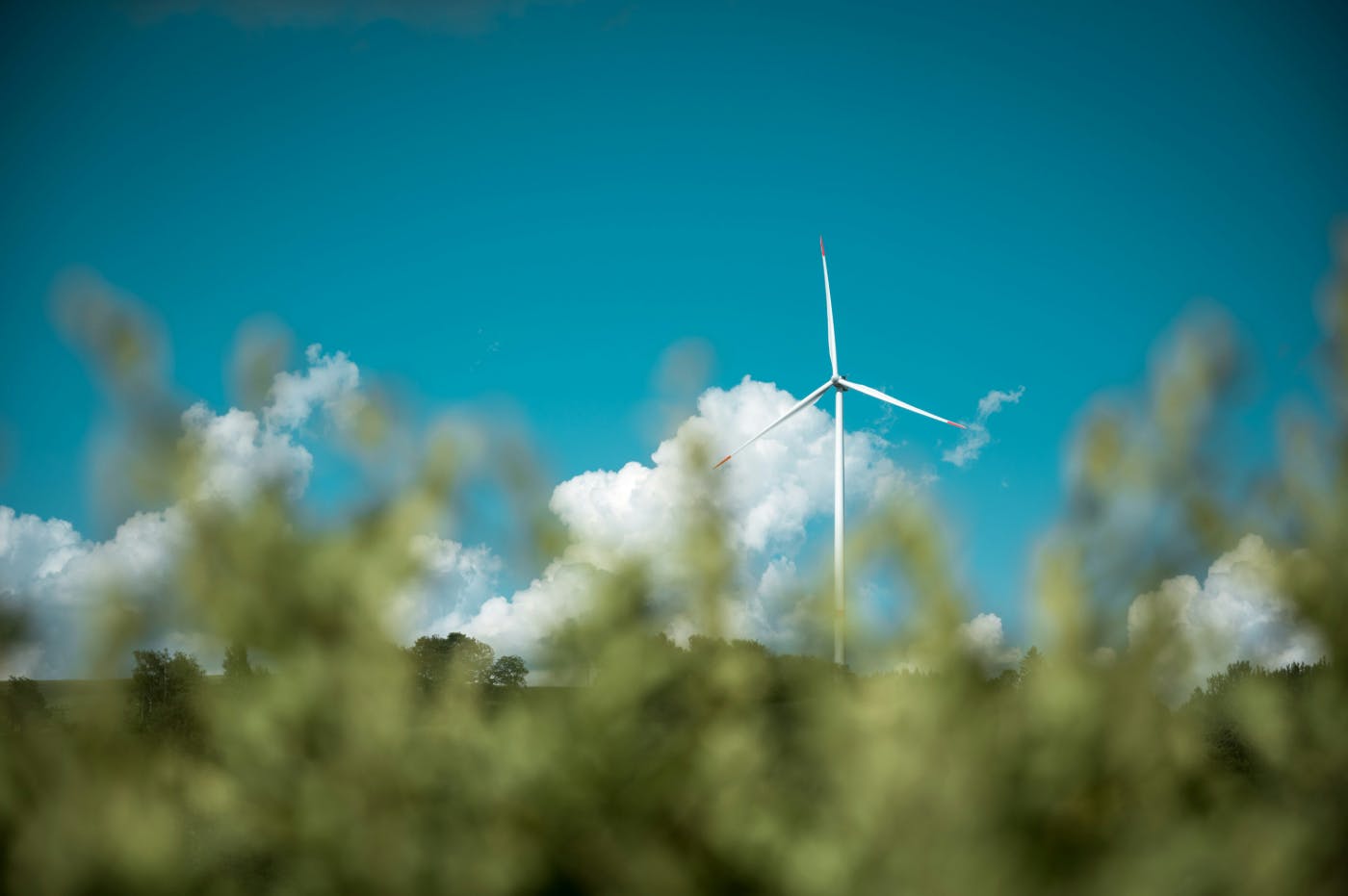
But while we’re busy scrolling, clicking, and refreshing, something we don’t often consider is that the internet has a very real, very physical environmental impact.
The internet: our wonderful, limitless, cat-video-filled digital universe. It’s where we work, shop, binge-watch, and occasionally fall down Wikipedia rabbit holes at 2 a.m. But while we’re busy scrolling, clicking, and refreshing, something we don’t often consider is that the internet has a very real, very physical environmental impact.
Despite its seemingly intangible nature, the digital world requires an enormous amount of energy. Every website visit, every image load, and every streamed video demands power, and that power comes from massive data centers spread across the globe. These centers house the servers that keep the internet running, and they consume staggering amounts of electricity, much of which is still generated from fossil fuels. Estimates suggest that the internet contributes as much carbon dioxide to the atmosphere as the aviation industry, which means your website could have more in common with a jet engine than you might think.
This raises an important question: can web designers, developers, and site owners help reduce the environmental impact of the web? The answer is yes. Sustainable web design isn’t just a trendy buzzword—it’s a growing movement that prioritizes efficiency, performance, and responsible energy consumption. Websites that are optimized for sustainability load faster, provide a better user experience and even rank better in search engines. The benefits go beyond just being eco-friendly; they improve functionality and usability, too.
In the sections ahead, we’ll explore the hidden energy costs of the internet, outline the principles of sustainable web design, and go through actionable steps to make a website more eco-friendly. The goal is to provide a deeper understanding of how even small decisions in design and development can have a lasting impact on reducing the internet’s carbon footprint.
Let’s start by taking a closer look at how much energy the internet really consumes because the numbers might surprise you.

Understanding the Carbon Footprint of the Web
The internet may feel like an infinite, weightless space where data floats freely from one place to another, but in reality, every click, scroll, and page load has a cost—an energy cost. The websites we visit don’t just exist in some abstract digital ether; they are stored on physical servers housed in massive data centers, and those data centers consume energy around the clock to keep our digital world running.
How Much Energy Does the Internet Use?
If you’ve never thought about the energy demand of the web, the numbers might be shocking. The internet is responsible for roughly 2 to 4 percent of global carbon emissions—a footprint that rivals that of the entire airline industry. And that number is only expected to grow as more people come online, as video content continues to dominate digital media, and as AI-driven processes increase computational demands.
A single website visit may seem insignificant on its own, but when multiplied by the billions of daily users, the impact becomes massive. Here are some eye-opening figures:
- A single Google search produces an estimated 0.2 to 0.7 grams of CO₂, depending on factors like location and device. Multiply that by the 8.5 billion searches performed every day, and the emissions quickly add up.
- One hour of video streaming on platforms like YouTube or Netflix emits roughly 36 grams of CO₂ per user. Considering that YouTube alone delivers over a billion hours of video daily, the total emissions from streaming are staggering.
- An average website produces around 1.76 grams of CO₂ per page view. If a site receives 100,000 visitors per month, that translates to over 2,000 kilograms of CO₂ per year—roughly the same amount of emissions as driving a gas-powered car for 5,000 miles.
With numbers like these, it’s easy to see how the Internet has become one of the world’s most resource-hungry industries.
Where Does All This Energy Go?
Most of the energy consumption behind the Internet comes from three primary sources:
- Data Centers: These are the backbone of the web, housing the servers that store websites, apps, and digital services. They require enormous amounts of electricity not only to power the machines but also to keep them cool. Some of the largest data centers consume as much electricity as small cities.
- Networks and Infrastructure: The physical cables, satellites, and wireless networks that connect the world also consume a significant amount of energy. Every time you load a website or stream a video, data is being transferred across long distances, requiring power at every step.
- End-User Devices: The smartphones, laptops, and tablets we use every day all require electricity, and as websites and apps become more complex, devices need to work harder to process all that data, increasing their energy consumption.
Why Should We Care?
It’s tempting to think that digital products are inherently better for the planet than their physical counterparts, and in some cases, they are. Streaming music is arguably more sustainable than manufacturing and distributing CDs, and digital books eliminate the need for paper and ink. However, the internet’s energy consumption is growing at an unsustainable rate. If left unchecked, digital emissions could double within the next decade, making it harder to reach global climate goals.
The good news? There are solutions. By designing and developing websites with efficiency in mind, we can reduce their energy demands, minimize unnecessary data transfers, and decrease overall carbon emissions. Sustainable web design is about making smarter choices—not just for the planet but also for speed, user experience, and long-term efficiency.
In the next section, we’ll dive into the core principles of sustainable web design and how they can guide us toward a more eco-friendly digital future.

Principles of Sustainable Web Design
Now that we understand the environmental impact of the internet, the next step is to explore how web design can be approached in a way that reduces its footprint. Sustainable web design isn’t about sacrificing aesthetics or functionality; it’s about making smarter choices that lead to energy efficiency, better performance, and a smoother user experience.
While there’s no universal rulebook for sustainable web design, there are key principles that guide the movement. These principles focus on reducing waste, optimizing efficiency, and prioritizing digital sustainability alongside traditional design concerns like usability and accessibility.
Efficiency is Everything
A well-designed website should be built to do more with less. Every element on a webpage, from images and videos to scripts and third-party integrations, requires data transfer and computational power. The more streamlined a site is, the less energy it consumes.
Some ways to achieve efficiency in web design include:
- Eliminating unnecessary features, animations, and bloated code that slow down page loads
- Using optimized images and videos to reduce data-heavy elements
- Choosing lightweight fonts and avoiding excessive custom typography that requires additional resources
- Minimizing third-party tracking scripts, which not only consume energy but also compromise user privacy
The result of an efficient website isn’t just lower emissions—it also means faster load times, better user experience, and improved SEO rankings.
Less Data, Less Waste
Many websites are built without considering the long-term impact of the data they generate and store. Unused media files, outdated scripts, and unnecessary database entries all contribute to an inefficient and energy-hungry website. Sustainable web design encourages mindful data management, which includes:
- Regularly auditing and removing unnecessary files from the server
- Using modern file compression techniques to store and serve content more efficiently
- Implementing lazy loading, which ensures that images and videos are only loaded when they are needed rather than all at once
- Avoiding excessive tracking and analytics that gather more data than necessary
By reducing the amount of data a website processes, it not only saves energy but also makes the site more responsive and easier to maintain.
Design for Longevity and Adaptability
Many websites are built with short-term goals in mind, often requiring frequent redesigns and redevelopment. This results in wasted resources as outdated websites are scrapped and rebuilt from scratch. Sustainable web design promotes a forward-thinking approach that ensures websites remain functional, relevant, and adaptable for years to come.
To design for longevity, developers should:
- Use clean, maintainable code that can be updated without needing a complete overhaul
- Choose scalable content management systems (CMS) that allow for long-term flexibility
- Follow web standards and best practices to ensure compatibility with future technologies
- Avoid trends that quickly go out of style and require constant redesigns
A well-built website should be able to evolve with minimal effort, reducing the environmental impact of frequent redevelopment.
Prioritizing User Experience and Accessibility
Sustainable web design and user experience go hand in hand. A well-structured, easy-to-navigate website naturally reduces wasted energy by helping users find what they need without unnecessary clicks, page loads, or distractions.
Good UX principles that support sustainability include:
- Clear, intuitive navigation that prevents users from getting lost
- Concise, well-organized content that doesn’t require excessive scrolling or searching
- Mobile-first design, ensuring that the site is optimized for devices with lower processing power
- Accessibility features that make the site usable for people with disabilities, preventing unnecessary reloads or excessive time spent searching for information
An accessible website isn’t just more inclusive—it also ensures that resources are used efficiently, benefiting both users and the environment.
Choosing the Right Hosting and Infrastructure
While web hosting will be covered in more depth in the next section, it’s important to acknowledge that the infrastructure behind a website plays a huge role in its sustainability. Websites hosted on servers powered by renewable energy are significantly greener than those relying on traditional fossil-fuel-powered data centers.
Some key considerations for sustainable hosting include:
- Selecting web hosting providers that run on 100 percent renewable energy
- Using content delivery networks (CDNs) to distribute content efficiently and reduce strain on servers
- Choosing data centers located in regions with cleaner energy grids
By being mindful of where and how a website is hosted, businesses and developers can make a significant difference in its carbon footprint.
A Greener Web is a Faster Web
One of the most compelling arguments for sustainable web design is that it doesn’t just help the environment—it makes the web a better place for everyone. Websites that are lightweight, efficient, and well-structured perform better, provide a better user experience, and rank higher in search engines.
Sustainability in web design isn’t just a moral choice; it’s a practical one. A website that loads faster, consumes less data, and remains adaptable over time is more resilient, cost-effective, and future-proof.
In the next section, we’ll take a closer look at one of the most impactful decisions web owners can make: choosing an eco-friendly web host.

Choosing an Eco-Friendly Web Host
Even the most efficiently designed website still relies on a web host to serve its content to users, and not all hosting providers are created equal. The environmental impact of a website is largely determined by the energy source powering its servers. If that energy comes from coal or other fossil fuels, then every visit to the site contributes to carbon emissions. On the other hand, if a website is hosted on a server powered by renewable energy, its footprint is significantly lower.
Why Does Web Hosting Matter?
Web hosting is one of the largest contributors to the internet’s overall carbon footprint. Data centers—the massive facilities that house web servers—require an enormous amount of electricity not just to run but also to cool down equipment that generates intense heat. Some of the world’s biggest data centers consume as much electricity as entire cities, and in many regions, they are still primarily powered by non-renewable sources.
Choosing a green hosting provider is one of the most effective ways to reduce a website’s environmental impact. By opting for a host that runs on renewable energy or purchases carbon offsets, website owners can significantly cut down on their digital emissions.
What Makes a Web Host "Green"?
Not all hosting companies that claim to be sustainable are truly eco-friendly. Here are some key factors to look for when choosing a green web host:
- Powered by Renewable Energy: The best hosting providers run entirely on wind, solar, or hydroelectric power, ensuring that their operations have little to no carbon footprint.
- Energy-Efficient Infrastructure: Some data centers are built with cutting-edge cooling technologies and hardware that require less electricity to operate.
- Carbon Offsetting Programs: If a hosting provider isn’t directly powered by renewable energy, they may participate in carbon offset programs by investing in reforestation or renewable energy projects to counterbalance their emissions.
- Commitment to Sustainability: A truly green host will be transparent about their energy sources, sustainability initiatives, and ongoing efforts to reduce their environmental impact.
Popular Green Hosting Providers
A growing number of web hosting companies are making sustainability a priority. Here are a few that stand out for their commitment to eco-friendly practices:
- GreenGeeks: Runs on 100 percent renewable energy and invests three times the energy they consume back into wind power.
- Kualo: A UK-based hosting provider that runs entirely on renewable energy and actively supports charitable sustainability initiatives.
- Krystal: Another renewable-energy-powered hosting company known for its transparency and commitment to reducing digital carbon footprints.
- SiteGround (Google Cloud-Powered): While not entirely green on its own, SiteGround uses Google Cloud servers, which are committed to carbon neutrality and sustainability.
The hosting industry is shifting toward greener alternatives, and as demand for sustainable solutions grows, more providers are likely to follow suit.
How to Switch to a Green Hosting Provider
For those who already have an existing website, migrating to an eco-friendly host is often simpler than expected. Here’s a general process:
- Research and Choose a Green Hosting Provider: Compare options based on energy sources, pricing, and features.
- Backup Your Website: Before migrating, ensure all files, databases, and content are securely backed up.
- Initiate Migration: Many hosting providers offer free migration services, making the process seamless.
- Test the Site: Once migrated, test the site to ensure all content and functionality have transferred correctly.
- Update Domain and DNS Settings: If needed, update your domain’s settings to point to the new hosting provider.
For new websites, choosing a green host from the beginning is the easiest way to ensure long-term sustainability.
Hosting is Just the Beginning
Selecting an eco-friendly host is a crucial step, but it’s only part of the bigger picture. While hosting determines the baseline energy impact of a website, design choices, media optimization, and coding practices all contribute to how much energy a site consumes.
Next, we’ll explore how designing with efficiency in mind can take sustainability to the next level.

Designing for Efficiency: Less is More
A website isn’t just a collection of pages—it’s a machine that processes and delivers information, and like any machine, its efficiency matters. The more complex and bloated a website is, the more energy it consumes. Every extra megabyte of data, every unnecessary animation, and every hidden but still loading script adds to the strain on servers and devices, increasing power consumption.
Sustainable web design follows a simple but powerful principle: less is more. By reducing excess, streamlining user experience, and optimizing performance, a website can function smoothly while using fewer resources.
The Cost of Heavy Websites
Websites today are heavier than ever. Over time, trends in design have leaned toward high-resolution images, auto-playing videos, interactive elements, and scripts that track every user movement. While these features can enhance engagement, they come at a cost.
- The average web page size has grown over 400 percent in the last decade, now exceeding 2 megabytes per page on average.
- Bloated websites take longer to load, requiring more processing power and energy—not just from data centers but from the user's device as well.
- Slow-loading sites frustrate users, increasing bounce rates and reducing overall engagement.
A well-optimized website isn’t just better for the planet—it’s better for business, user experience, and even search engine rankings.
How Minimalist Design Saves Energy
Minimalist web design isn’t just an aesthetic choice; it’s an efficiency strategy. By reducing unnecessary elements, designers and developers can create cleaner, faster-loading pages that require less energy to process. Some key principles of sustainable minimalism include:
- Eliminating Unnecessary Elements: If a feature doesn’t serve a functional purpose, reconsider whether it’s needed. Do users need an auto-playing background video? Does the homepage really require ten different high-resolution images?
- Using Simple, Clean Layouts: A well-organized page with clear navigation reduces the number of clicks and loads required for users to find what they need.
- Choosing Efficient Typography: Custom fonts and excessive font variations require additional HTTP requests and processing power. Sticking to system fonts or using fewer font styles can reduce energy use.
By focusing on what’s essential, minimalist design enhances usability while reducing the digital waste that clutters many modern websites.
Optimizing Images and Videos for Sustainability
One of the biggest energy drains on any website is media. High-resolution images and videos take up large amounts of bandwidth, requiring more data transfer and server power.
To make media more sustainable:
- Compress Images: Tools like TinyPNG or ImageOptim can significantly reduce file size without sacrificing quality.
- Use Next-Gen Formats: Formats like WebP and AVIF provide high-quality visuals at a fraction of the file size of traditional JPEGs and PNGs.
- Lazy Load Images and Videos: Instead of loading all media at once, lazy loading ensures that images and videos only load when they’re needed, reducing unnecessary data transfer.
- Limit Auto-Playing Content: Auto-playing videos not only consume energy but also frustrate users. Giving users control over playback is a simple way to cut energy use.
By treating images and videos as valuable resources rather than default design elements, web designers can reduce energy use without compromising visual appeal.
Reducing Code Bloat for Faster, Cleaner Performance
Just as a website’s visual elements can be excessive, so can its code. Many websites carry unnecessary scripts, redundant CSS rules, and inefficient JavaScript that slow down performance.
Best practices for optimizing code include:
- Minifying HTML, CSS, and JavaScript: This removes unnecessary spaces, comments, and characters, reducing file sizes and improving load speeds.
- Reducing Third-Party Plugins and Trackers: Many websites rely on excessive third-party integrations that increase load times and consume extra energy. Removing unnecessary trackers and plugins improves efficiency.
- Using Asynchronous and Deferred Loading: Ensuring that scripts load only when needed prevents slowdowns and unnecessary processing power.
- Optimizing Server Requests: Reducing the number of HTTP requests a page makes speeds up loading and reduces energy demands.
Clean, efficient code doesn’t just make a site faster—it makes it more sustainable and easier to maintain.
Simplicity is the Future of Web Design
The shift toward lighter, more efficient websites isn’t just about sustainability. Faster, well-optimized sites provide better user experiences, rank higher in search engines, and work more seamlessly across devices. Sustainable web design is about embracing efficiency without sacrificing quality.
Next, we’ll take a deeper look at how developers can fine-tune website performance through optimized coding and backend improvements.

Optimizing Code and Performance
A website’s efficiency isn’t just determined by how it looks; it’s also shaped by how it’s built. Bloated, inefficient code is one of the biggest culprits behind slow-loading, energy-hungry websites. Every unnecessary line of code, every redundant script, and every unoptimized function forces browsers and servers to work harder, consuming more energy in the process.
Sustainable web development is about writing cleaner, more efficient code that reduces processing power, improves speed, and minimizes resource waste.
Why Bloated Code is a Problem
Many modern websites are loaded with unnecessary scripts, excessive dependencies, and redundant lines of code that do little more than slow things down. This happens for several reasons:
- Overuse of JavaScript frameworks and libraries: While libraries like jQuery, React, and Vue can be powerful, including them unnecessarily or failing to optimize them can create significant performance issues.
- Excessive third-party integrations: Many websites rely on third-party tracking scripts, analytics tools, social media embeds, and marketing widgets that pile up and slow down performance.
- Unoptimized CSS and HTML: Redundant styles, unnecessary classes, and unused CSS rules add weight to a webpage without improving functionality.
The more code a website has to process, the longer it takes to load, the more energy it requires, and the worse the overall experience becomes for users.
Best Practices for Writing Efficient Code
Optimizing a website’s codebase is one of the most effective ways to reduce its energy consumption while improving performance. Here are some key strategies:
- Minify CSS, JavaScript, and HTML: Removing unnecessary spaces, comments, and formatting from code files reduces their size and speeds up page loads. Tools like UglifyJS and CSSNano can help automate this process.
- Reduce Unused CSS and JavaScript: Many sites load styles and scripts that aren’t even used on most pages. Tools like PurifyCSS and Tree-shaking for JavaScript can identify and remove unnecessary code.
- Limit the Use of JavaScript Where Possible: JavaScript requires processing power from both the server and the user’s device. Replacing JavaScript-based interactions with simpler CSS solutions (such as using CSS animations instead of JavaScript for visual effects) can reduce energy consumption.
- Optimize Database Queries: If a website uses a content management system (CMS) like WordPress, bloated databases can slow things down. Regularly cleaning up unused database entries and optimizing queries can improve performance.
- Use Server-Side Caching: Caching stores frequently accessed data so that it doesn’t have to be generated from scratch with every page load. This significantly reduces server workload and energy consumption.
These optimizations not only make websites more sustainable but also lead to better performance, improved user experience, and higher search rankings.
The Role of Content Delivery Networks (CDNs)
A Content Delivery Network (CDN) is one of the most powerful tools for improving a website’s speed and sustainability. Instead of serving every request from a single server, CDNs distribute website content across multiple servers in different locations.
This has two major benefits:
- Faster Load Times: CDNs reduce the physical distance between a user and the server delivering content, leading to faster page speeds.
- Reduced Energy Consumption: By spreading traffic across multiple servers, CDNs reduce the load on any single data center, making web infrastructure more efficient.
Using a CDN is a simple but highly effective way to make a website more eco-friendly while improving its reliability and speed.
The Impact of Lazy Loading and Asynchronous Scripts
One of the simplest ways to make a website more efficient is to prevent unnecessary elements from loading all at once. Two techniques that help with this are lazy loading and asynchronous script loading.
- Lazy Loading: Instead of loading every image, video, or script on a page immediately, lazy loading ensures that elements only load when they are about to be viewed. This reduces initial load time and saves bandwidth.
- Asynchronous and Deferred Loading: Scripts that aren’t essential for a page’s initial render should be loaded asynchronously or deferred so that they don’t block other page elements from appearing quickly.
These techniques are especially important for mobile users, where slow loading speeds and excessive energy consumption can be even more noticeable.
Small Code Changes, Big Impact
The key takeaway here is that sustainable web design isn’t just about the visual side of a website—it’s about the underlying structure as well. Writing clean, efficient code doesn’t just make a website faster; it makes it greener, cheaper to operate, and more future-proof.
Now that we’ve covered optimization at the code level, it’s time to focus on another major contributor to digital carbon footprints: media. In the next section, we’ll explore how to make images, videos, and animations more sustainable without sacrificing quality.

Sustainable Media Practices
Images, videos, and animations are the lifeblood of modern web design, making sites visually appealing and engaging. But they also come at a cost. Media files account for a huge portion of a website’s data load, requiring significant bandwidth and energy to process, store, and deliver.
A poorly optimized website packed with high-resolution images, auto-playing videos, and unnecessary animations doesn’t just slow down performance—it contributes to a larger carbon footprint. Fortunately, there are ways to reduce the impact of media while still maintaining quality and engagement.
Why Media is a Major Energy Drain
Every time a user loads a webpage, their browser requests data from a server. The larger the files, the more energy-intensive this process becomes. Consider the following:
- Images account for more than half of the average webpage’s total size. A single uncompressed image can be larger than the rest of a webpage’s code combined.
- Streaming video uses enormous amounts of bandwidth. One hour of HD streaming generates more than 300 grams of CO₂, equivalent to driving a car for nearly a mile.
- Animations and dynamic graphics require extra processing power, making pages heavier and increasing the energy load on user devices.
This means that making smart choices about media can drastically improve a site’s sustainability without sacrificing its aesthetic appeal.
Optimizing Images for a Lighter Web
One of the simplest ways to make a website more sustainable is by optimizing images. Here’s how:
- Use the Right File Format: Traditional image formats like JPEG and PNG are being replaced by more efficient alternatives like WebP and AVIF, which offer the same quality at significantly smaller file sizes.
- Compress Images Without Losing Quality: Tools like TinyPNG and ImageOptim can reduce file sizes by over 80 percent without visible loss of quality.
- Resize Images Before Uploading: Many websites load images at larger dimensions than needed, wasting bandwidth. Cropping and resizing images to the exact dimensions required prevent this waste.
- Enable Lazy Loading: Instead of loading all images at once, lazy loading ensures that images only appear when they’re about to be viewed, reducing unnecessary data transfers.
- Use SVGs for Simple Graphics: Scalable Vector Graphics (SVGs) are lightweight and don’t lose quality at different screen sizes, making them a great alternative for logos, icons, and illustrations.
With these strategies, websites can significantly reduce their energy demands while still looking visually impressive.
Rethinking Video Content
Video is one of the most energy-intensive elements of the web. While it’s an engaging medium, it should be used strategically to avoid unnecessary carbon emissions.
- Limit Auto-Playing Videos: Auto-play increases data usage and consumes energy even when users don’t engage with the content. Giving users control over when and how videos play is a simple way to reduce waste.
- Use Lower Resolutions When Possible: Not every video needs to be in 4K. Providing multiple resolution options allows users to choose a lower-energy alternative if high resolution isn’t necessary.
- Host Videos Efficiently: Embedding videos from platforms like YouTube or Vimeo instead of hosting them directly on a site reduces bandwidth usage and server strain.
- Replace Videos with Alternative Media: In some cases, an animation or well-designed image can communicate a message just as effectively as a video without the heavy data load.
By carefully considering when and how to use video, designers can maintain engaging content while reducing a site’s overall environmental impact.
The Hidden Impact of Animations and Motion Graphics
Animations and motion effects have become a staple of modern web design, adding dynamic elements that draw attention and enhance user experience. However, these effects require additional scripts and processing power, increasing energy consumption.
Some ways to make animations more sustainable include:
- Using CSS Instead of JavaScript: CSS animations are often more lightweight than JavaScript-based alternatives, requiring less computational power.
- Minimizing Heavy Motion Effects: Reducing complex animations and excessive transitions can improve both performance and energy efficiency.
- Preferring Static Alternatives: In some cases, a well-designed static image can achieve the same effect as an animation without requiring extra processing power.
Websites don’t need to eliminate animations entirely, but they should be used sparingly and thoughtfully to avoid unnecessary energy consumption.
Balancing Aesthetics and Sustainability
Sustainable media practices don’t mean making a website boring or stripped down. Instead, they encourage designers and developers to think critically about how media is used, ensuring that every image, video, and animation serves a real purpose.
A well-optimized website can still be visually stunning, engaging, and modern while consuming far less energy.
Next, we’ll explore how green UX and accessibility go hand in hand, making websites more user-friendly while also contributing to a more sustainable digital landscape.

The Importance of Green UX and Accessibility
Sustainability in web design isn’t just about reducing energy consumption—it’s also about creating a more user-friendly, inclusive internet. A well-designed, efficient website doesn’t just load faster and use fewer resources; it also ensures that people of all abilities can access and navigate it without unnecessary obstacles.
By aligning sustainability with user experience (UX) and accessibility, designers can create websites that are faster, easier to use, and more environmentally responsible.
How UX and Sustainability Are Connected
A website with poor UX forces users to spend more time searching for information, clicking through unnecessary pages, and refreshing slow-loading content—all of which contribute to excess energy use. Sustainable UX design simplifies the digital experience, ensuring that users can find what they need quickly and efficiently.
Some key principles of green UX include:
- Clear, Intuitive Navigation: A well-structured site helps users find information faster, reducing unnecessary page loads and wasted time.
- Reducing Click Depth: If users have to click through multiple pages to access important content, they are generating additional requests to the server. Streamlining navigation reduces energy use.
- Concise, Well-Organized Content: Overloading a page with excessive text and unnecessary images makes it harder to scan and increases the amount of data being processed. A minimalist approach improves both usability and sustainability.
- Eliminating Unnecessary Features: Do users really need pop-ups, auto-playing content, or excessive animations? Cutting these elements improves the user experience while reducing digital waste.
By focusing on usability, websites can minimize digital friction, leading to a smoother, more efficient experience for both users and the environment.
Accessibility as a Sustainability Strategy
Web accessibility ensures that people with disabilities can use a website effectively, but it also plays a role in sustainability. An accessible website is built with efficiency in mind, reducing complexity and unnecessary interactions.
Some accessibility best practices that also support sustainability include:
- Fast-Loading, Lightweight Pages: Many accessibility guidelines recommend fast-loading pages to accommodate users with limited bandwidth or assistive technologies. This naturally aligns with energy-efficient design.
- Readable, Well-Formatted Text: Instead of relying on excessive images or animations to convey information, accessible websites use clear text, which requires less data to load.
- Keyboard Navigation and Simplified Interactions: Ensuring that users can navigate a site without a mouse or complex interactions reduces the need for additional scripts and unnecessary code execution.
- Dark Mode and Energy-Saving Color Choices: Dark mode can reduce energy consumption on OLED screens, and high-contrast color choices improve readability without increasing data load.
A website designed with accessibility in mind is often more efficient, faster, and more sustainable by default.
Less Friction, More Efficiency
The ultimate goal of sustainable UX and accessibility is to reduce unnecessary barriers. A website that loads quickly, provides clear information, and minimizes distractions isn’t just better for the environment—it’s better for everyone who uses it.
Next, we’ll take a look at how to measure and improve a website’s sustainability using the right tools and strategies.

Measuring and Improving Website Sustainability
Understanding the principles of sustainable web design is one thing—putting them into practice and tracking their impact is another. To truly minimize a website’s carbon footprint, designers and developers need to measure its environmental impact and continuously refine their approach.
Thankfully, there are tools and strategies available to analyze a website’s energy consumption and identify areas for improvement.
Tools for Measuring Website Carbon Footprint
Several online tools can estimate the environmental impact of a website by analyzing data usage, hosting infrastructure, and energy efficiency. Some of the most useful include:
- Website Carbon Calculator (websitecarbon.com): Estimates the carbon footprint of a website and offers insights into how to make it greener.
- Ecograder (ecograder.com): Analyzes site performance, energy efficiency, and environmental impact, providing suggestions for improvement.
- Google PageSpeed Insights (pagespeed.web.dev): While not specifically focused on sustainability, this tool helps optimize performance, which indirectly reduces energy consumption.
- GTmetrix (gtmetrix.com): Assesses load times and efficiency, highlighting areas where optimization can cut down on unnecessary data transfers.
By using these tools, website owners can get a clear picture of their digital impact and start making data-driven improvements.
Strategies for Continuous Improvement
Sustainability isn’t a one-time effort—it requires ongoing attention and refinement. Some ways to ensure a website remains eco-friendly over time include:
Regular Performance Audits: Checking load times, image sizes, and unnecessary scripts to prevent gradual digital bloat.
Reducing Unused Data and Files: Periodically cleaning up databases, removing outdated content, and optimizing storage.
Monitoring Hosting and Energy Sources: Staying informed about a web host’s energy policies and switching to greener alternatives when available.
Encouraging Sustainable Practices in Content Creation: Educating content teams about the impact of high-resolution media, auto-playing elements, and excessive tracking scripts.
Even small, incremental changes can lead to significant long-term reductions in digital carbon emissions.
Sustainability is a Journey, Not a Destination
No website will ever be 100 percent sustainable, but the goal is to make thoughtful, informed choices that minimize impact wherever possible. The key is to prioritize efficiency, keep unnecessary features to a minimum, and continually refine the user experience to reduce waste.
With a clear understanding of how to measure and improve digital sustainability, it’s time to wrap up with a final call to action—because a greener internet starts with the choices we make today.

Summing Up: Building a Sustainable Digital Future
The journey toward sustainable web design is not just a trend but a necessary evolution in our digital landscape. By embracing eco-friendly practices, we can significantly reduce the carbon footprint of our online activities, creating a more sustainable future for the planet.
Key Takeaways:
- Understanding the Environmental Impact: Recognizing that the internet's energy consumption rivals that of major industries highlights the urgency for sustainable practices.
- Principles of Sustainable Web Design: Prioritizing efficiency, reducing data waste, designing for longevity, and ensuring accessibility are foundational steps toward sustainability.
- Choosing Eco-Friendly Hosting: Opting for web hosts powered by renewable energy can drastically cut a website's environmental impact.
- Designing for Efficiency: Adopting minimalist design principles and optimizing media can lead to faster load times and reduced energy consumption.
- Optimizing Code and Performance: Clean, efficient coding practices and the use of Content Delivery Networks (CDNs) enhance both sustainability and user experience.
- Sustainable Media Practices: Thoughtful use of images, videos, and animations ensures engagement without unnecessary energy use.
- Green UX and Accessibility: Creating user-friendly and accessible websites aligns with sustainable goals, benefiting both users and the environment.
- Measuring and Improving Sustainability: Utilizing tools to assess a website's carbon footprint and committing to continuous improvement are crucial for long-term sustainability.
ThoughtLab's Commitment to Sustainable Web Design
At ThoughtLab, we understand the importance of integrating sustainability into our digital solutions. As a full-service web design agency, we approach web design holistically, ensuring that our strategies not only drive business growth but also promote environmental responsibility. Our commitment to sustainability is reflected in our comprehensive business analysis, strategic planning, user experience design, and sophisticated development processes. We strive to create websites that are not only engaging and efficient but also minimize environmental impact, aligning with our clients' values and the growing demand for eco-friendly digital practices.
As we move forward, it's imperative for designers, developers, and businesses alike to prioritize sustainability in their digital endeavors. By making conscious choices and implementing the practices discussed, we can collectively reduce the environmental impact of the web.
Let's build a digital world that not only connects and inspires but also preserves and respects the planet we call home.

